As mentioned in our previous article, the principles of syntropic farming revolve around the rules of regeneration which follow the natural course of succession and stratification – giving each plant the ideal conditions for its development.
The Orang Asli farmers that we introduce syntropic farming to often come from an agricultural background, which is an advantage to their plots as they are able to shed some of their own pearls of wisdom in order to further enhance their farm plots.
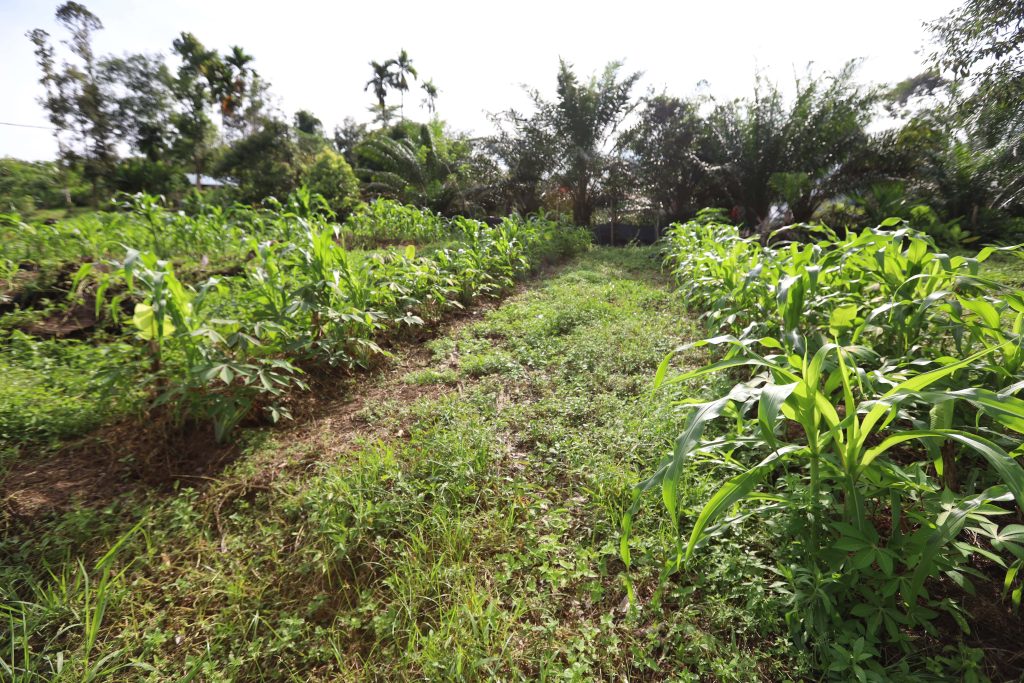
Orang Asli, also known as guardians of the forest, have long been associated in the field of agriculture. Living in the forests has definitely taught them a thing or two about taking care of surrounding plants and trees. They know what works and this has come in handy as they take on syntropic farming. Other Orang Asli have also engaged in farming activities, planting food trees wherever and whenever they could. This, too, has led them to master the art and science of farming.
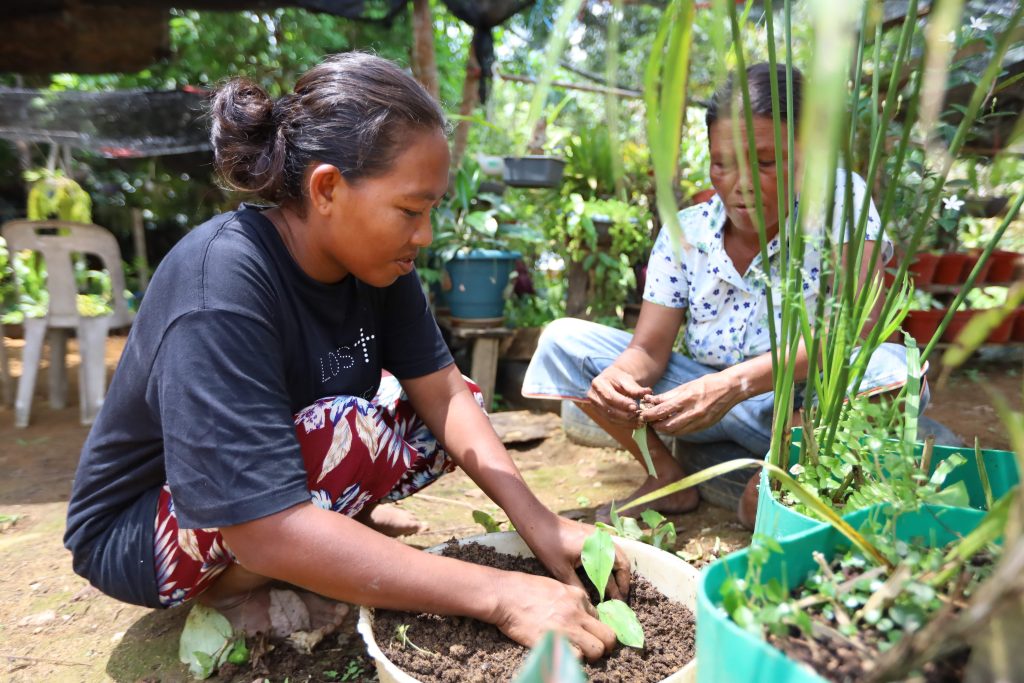
Going from one village to another, there is a noticeable difference between the farm plots despite all of them implementing the principles of Syntropic Farming that was introduced by our team. This is because they integrate some of their own farming knowledge to get the most out of their farm plots.
Pak Lipak and his family from Kg. Sualang have been using the tuba root (known scientifically as Derris Elliptica) to get rid of insects at their farm plots. According to him, his ancestors began using the technique and have been passed down for generations.
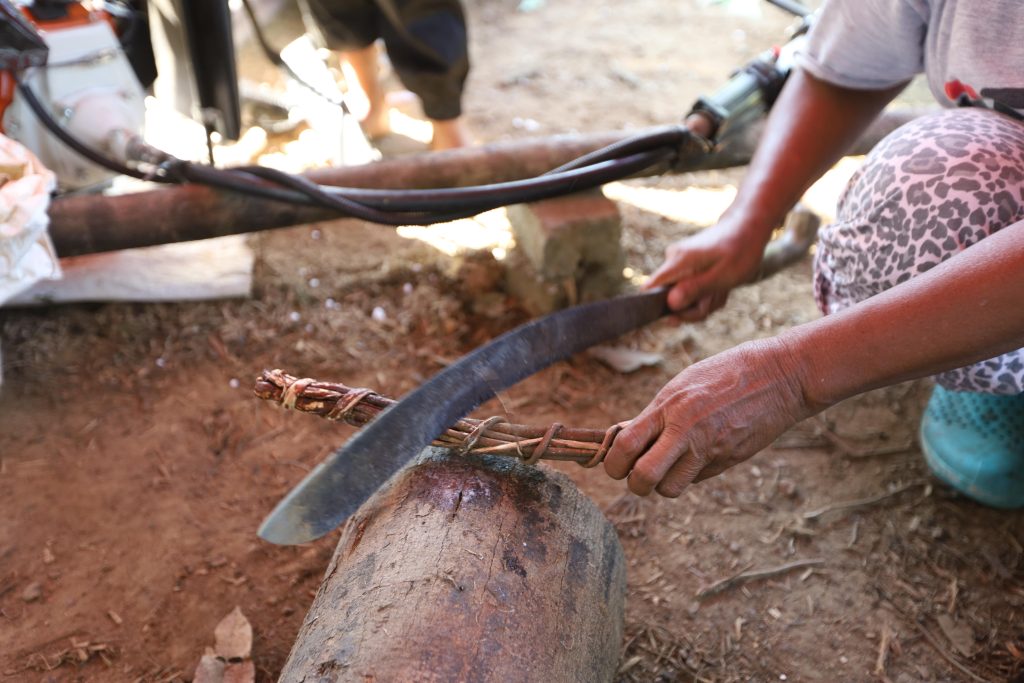
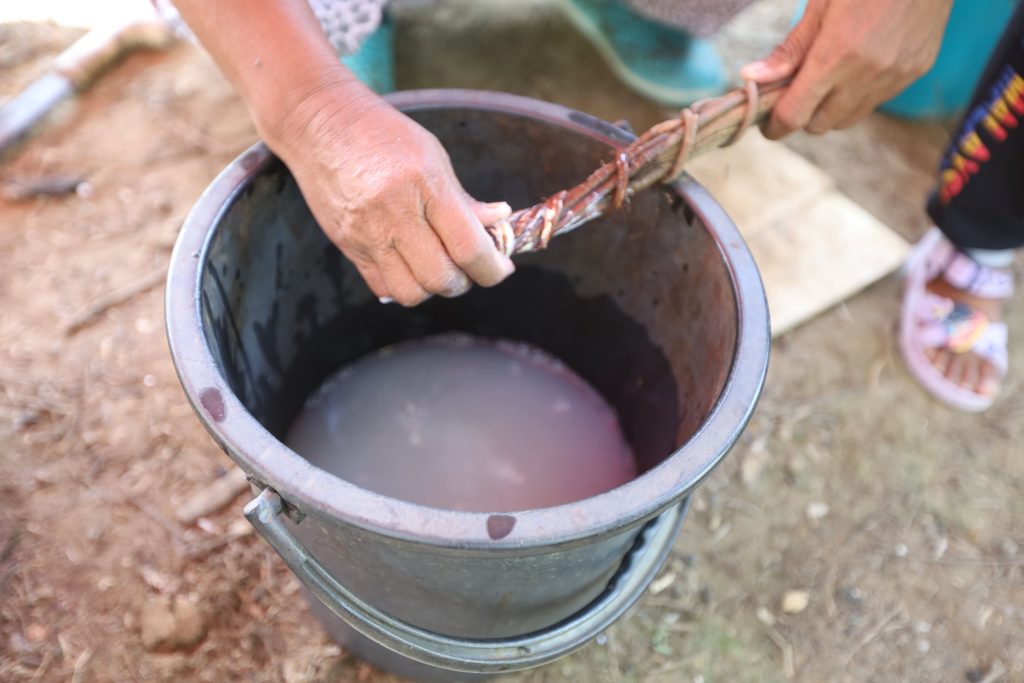
The tuba root is taken and crushed. Once crushed, it is then squeezed into a bucket or water can that has already been filled with water. The mixture is then sprayed onto the plants.
“In our experience using the liquid from the tuba root, it doesn’t kill the insects but only prevents insects from coming near and disturbing the crops.”
Pak Lipak, Kg. Sualang

Amai Imah and her husband from Kg. Petoh use an organic compost of food scraps such as fruit and vegetable skins and peels.
The process does take awhile as the food waste needs to be broken down before it can be used as compost. Once it’s ready, it is poured into a bottle and is sprayed on dying and diseased plants.
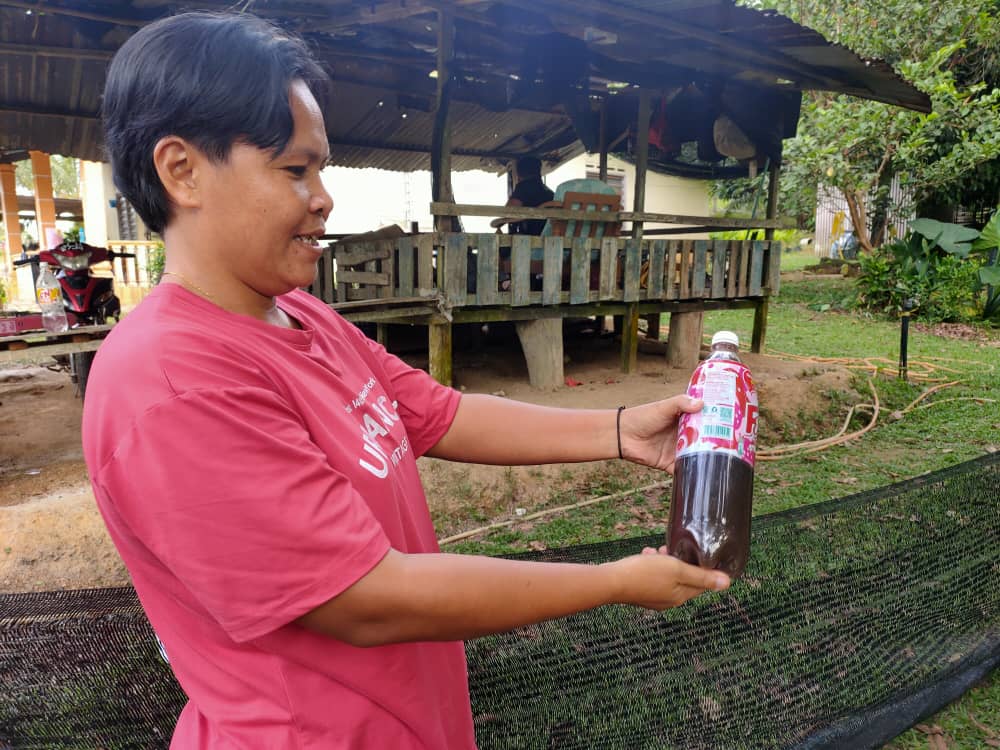
“I recently had a dying mangosteen tree, but once I used my recipe of compost on the plant, it was revived and started growing healthily.”
Amai Imah, Kg. Petoh
As you enter Kg. Guntung Minum Cempedak, you’ll see their quaint little nurseries with many types of plants hanging and arranged on the ground on one side and on the other, neat arrangements of plants in a wooden arch that resembles a mini greenhouse, but without the glass, of course.
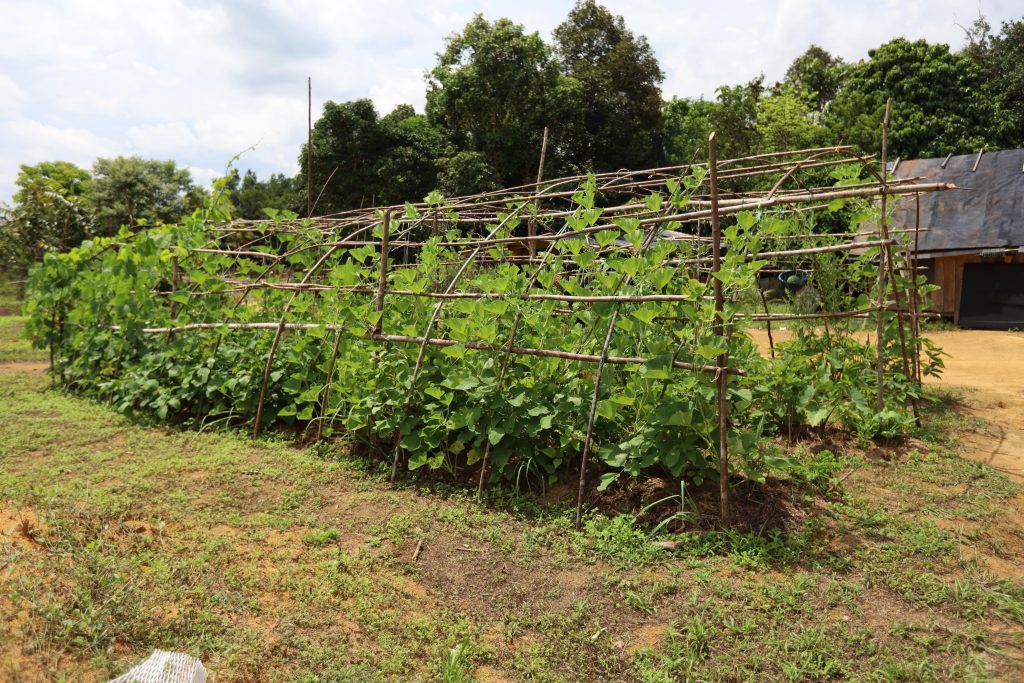
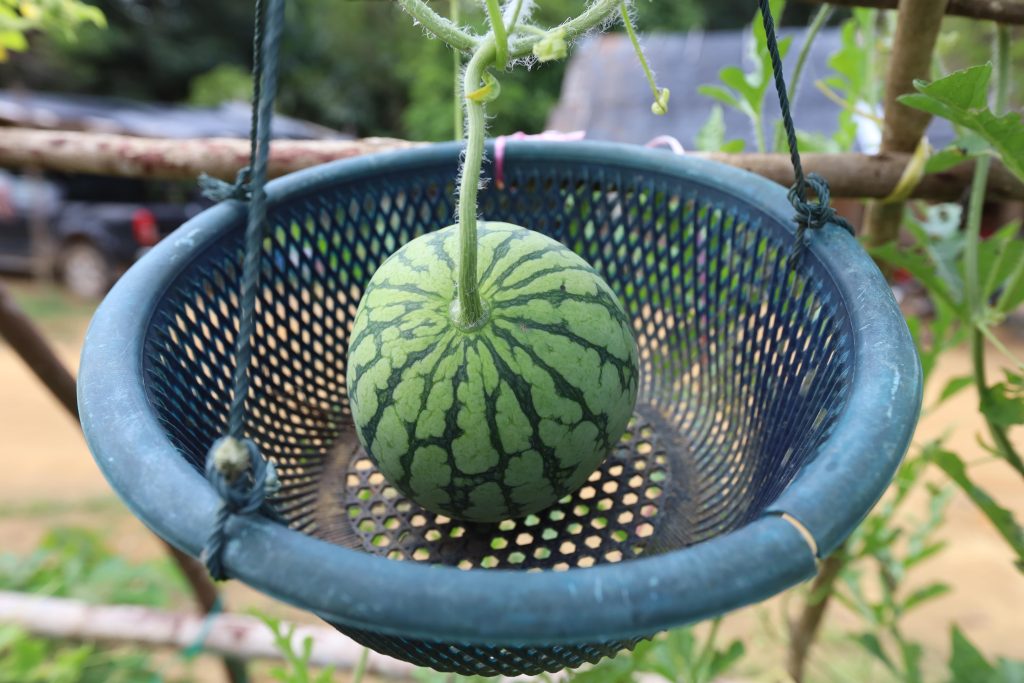
When you go closer, you’ll realise that it is actually their syntropic farm plots that are growing around the wooden arch that was built for the purpose of growing vine plants such as long beans and watermelon. Where many other mainstream farms use metal fences, villages such as Kg. Guntung Minum Chempedak use whatever resources they have around them to make their plots suitable for their growing produce. Another village that does this is Kg. Pinang, which has recently yielded a basket full of long beans.
Currently, there are 67 syntropic farmers from 13 Orang Asli villages who are putting their strengths, effort and prior knowledge into growing their agroforests according to the syntropic farming method. We hope that their farming wisdom will help to develop their farm plots so that they may yield more harvest in time to come.
Listen to some of their testimonies regarding syntropic farming here and follow us on social media to see the latest harvests from the farmers!
Written by,
Pamela Victor
Communications Officer






